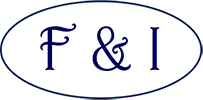Annual Course Jumping Report
Tuesday was an early start for Sue Ricketts and I and when we arrived at Addington at 8am we learnt our first thing…do not arrive early, you get accosted to write the report!
My focus over the course was Corinne Bracken who was our jump trainer this year. I had never had the opportunity to observe her before but had only heard good things, so I sat down with my notebook and was suitably impressed with her training philosophy and ‘eye’ for detail.
It was interesting that Corinne took written notes when meeting her riders and horses and asked questions before repeating this information back to them and retaining and responding to this throughout the lessons.
The main focus throughout the two days was the working in, stretching and making the horses supple through the scales of training. Emphasising the horse is an athlete, the horse having more ‘bulk’ than a human, this should not be rushed, ensuring the horse is fit for purpose. Corinne used a trotting pole serpentine exercise on both days, encouraging the riders to have a ‘plan’ and ensure the horses were relaxed before they started jumping.
Corrections were made to the riders’ positions early in the sessions, encouraging them to stretch down through the inside leg to prevent tension through the horses’ backs and using the weight through the inside of the foot, with a secure calf and soft knee as a safety blanket, absorbing softness through the hip, knee and ankle, reducing the need to use the rein.
The quality of the canter was assessed throughout, focussing on the inside leg and straightness through the outside rein without blocking the connection and energy from behind. Transitions made ‘are your friend, use them to help you’ especially when riding fences on a centre line with a change of rein….an exercise creating suppleness which in turn creates straightness. “The supple horse gives you more options so you can ride forward, collected, faster and slower” again relating back to the working-in exercise.
Corinne’s own movement around the arena meant that she viewed the horse and rider combinations from different angles, allowing her to step in and ‘teach’ when necessary as it “gives the rider confidence and skills” before returning to a more coaching mode.
Corinne’s practical, no nonsense approach showed huge empathy with the riders and horses. She stressed that we as trainers must not categorise horses and riders, and often a group lesson could be in essence three individual lessons all with the aim of improving technique and rideability, essentially through the quality of the canter and the horse creating a better energy and shape over a fence. Corinne is an avid believer in ground poles to encourage the horses to be consistent in their technique and not let the horse run into the bottom of the fence.
The differences in all levels of horses and riders were clear to see, with the young horses growing in confidence and the more experienced combinations working through straightness on curved lines and opening up their technique using parallels on related distances. These distances were shortened, firstly by the ground poles, followed by moving the front rail, to encourage the horses to lift through the shoulder and release over the back.
Feeling inspired the phrase “if you’re not winning, you’re learning” stayed with me and when I get home the hard work will start!
Thank you so much to Corinne, Ann and the committee for once again providing us with world class training and I’m counting down the days to January 2020. Many thanks also to Tim for your wonderful entertainment on Tuesday evening…although I fear the West End will not be contacting us soon!
Report by Linda DeMatteo BHSI
